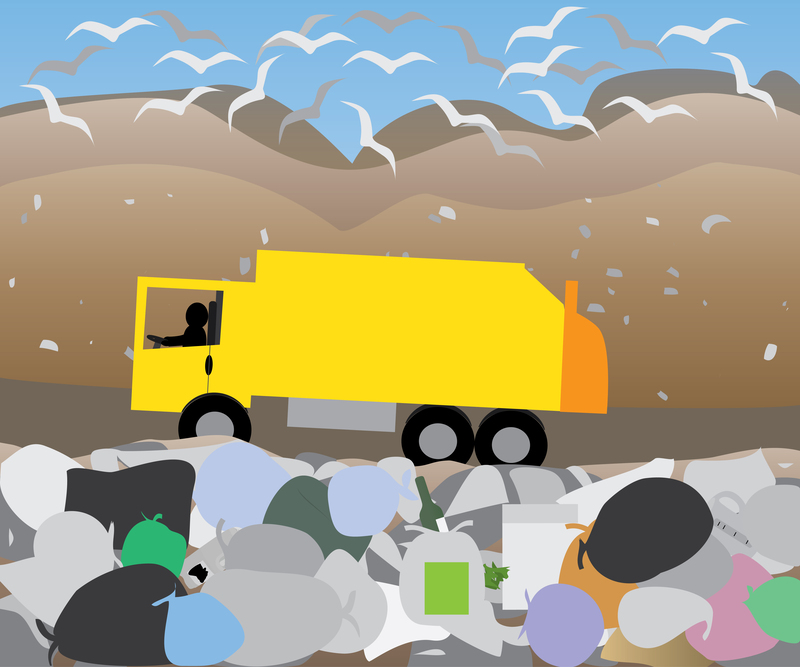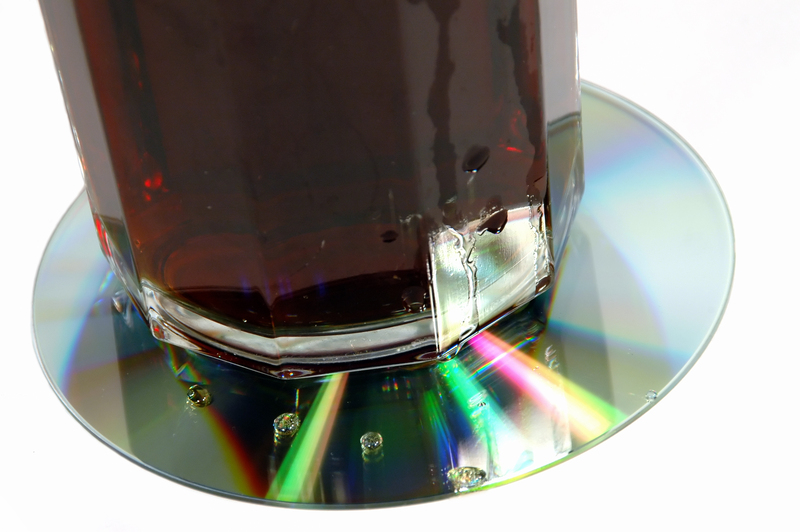Simplify Your Life with Strategic Clutter Removal and Hoarder Clean Up
Are you feeling overwhelmed by the clutter in your home or workspace? Do you find it hard to stay organized or perhaps struggle to part with possessions, even if you no longer use them? If so, you're not alone. Many people wrestle with excessive clutter, and for some, it can escalate into hoarding tendencies. Simplifying your life with strategic clutter removal and hoarder clean up can transform not only your physical environment but also your mental well-being. In this comprehensive guide, we'll explore effective techniques, psychological insights, and step-by-step strategies to help you reclaim your space and enjoy a clutter-free lifestyle.
Understanding the Importance of Clutter Removal
Living amidst clutter can negatively affect every aspect of your life. Disorganization can contribute to stress, reduce productivity, and even impact your health. By prioritizing clutter removal, you can unlock benefits such as better focus, enhanced energy, and a more harmonious living environment.
- Improved Mental Health: A tidy environment promotes calm and reduces anxiety.
- Greater Time Efficiency: Less time is wasted searching for lost items.
- Enhanced Cleanliness and Safety: Fewer things mean less dust and fewer tripping hazards.
- Boosted Productivity: Studies show clear spaces fuel motivation and workflow.

Recognizing When Clutter Becomes a Hoarding Problem
While it's normal for clutter to accumulate over time, hoarder clean up addresses more extreme cases. Hoarding disorder is a recognized mental health issue characterized by the compulsive accumulation of items, regardless of their actual value.
- Difficulty Discarding: Hoarders struggle to let go of possessions, even when they're no longer useful.
- Extreme Clutter: Living spaces become difficult or impossible to use for their intended purposes.
- Emotional Distress: The thought of removing items causes significant anxiety.
- Social Withdrawal: Embarrassment may lead to isolation and reluctance to invite others into the home.
Recognizing the signs of hoarding is the first step in seeking intervention and beginning the strategic cleaning process.
The Powerful Benefits of a Clutter-Free Space
Before diving into the practical steps, let's highlight why a decluttered environment is so transformative.
Physical Health
- Reduced allergens as dust and mold have fewer places to accumulate.
- Lower risk of falls and accidents in clear walkways.
- Easier maintenance and cleaning routines.
Mental Clarity
- Less visual and mental distraction.
- Increased focus and ability to relax.
- Breaks the cycle of feeling overwhelmed and unable to start.
Financial Savings
- Fewer duplicate purchases when you know what you have.
- Able to utilize all available space efficiently.
- Sell or donate excess items for potential monetary or tax return benefits.
The Psychology Behind Clutter & Hoarding
Understanding why we hang on to things is crucial for effective clutter management. Emotional attachment, perceived value, and even feelings of guilt or fear may influence our clutter removal decisions.
For hoarders, possessions may symbolize security, memory, or identity. Shame and anxiety can further fuel accumulation, making outside help or therapy necessary in severe cases.
Effective Strategies for Clutter Removal and Hoarder Clean Up
Whether you're tackling everyday mess or a serious hoarding issue, the following strategies can guide your journey to a simpler, freer lifestyle.
1. Set Clear Goals and Priorities
- Start by identifying which areas cause the most stress.
- Set achievable targets, such as decluttering one room or section at a time.
- Write down your vision of a clutter-free home for motivation.
2. Create an Action Plan
- Gather cleaning supplies, bins, and boxes ahead of time.
- Schedule dedicated periods for strategic clutter removal--even 15 minutes a day adds up.
- Recruit help from family members, friends, or professional organizers.
3. Apply Sorting Techniques
Sort items into three main categories:
- Keep: Regularly used and cherished items.
- Donate/Sell: Items in good condition you no longer need.
- Discard: Broken, unusable, or obsolete items.
4. Tackle Sentimental Clutter with Care
- Allow yourself to keep truly meaningful items.
- Create a memory box for special mementos.
- Take photos of items with emotional value but no practical use.
5. Digitize Where Possible
- Scan old photos, documents, or recipes and store them digitally.
- Reduce physical backlog and safeguard important records.
6. Establish Organizational Systems
- Label storage bins and shelves clearly.
- Store items by frequency of use and by room.
- Implement a "one in, one out" policy to keep clutter at bay.
7. Arrange for Proper Disposal
- Contact your local authorities for bulk waste pick-up schedules.
- Research recycling or donation centers for responsible disposal.
- Utilize junk removal services for large volumes or heavy items.
8. Seek Support for Hoarder Clean Up
- If hoarding is severe, professional organizers or mental health specialists can provide invaluable support.
- Join online forums or local support groups for encouragement.
- Remember, progress takes time--be patient and compassionate with yourself.
Maintaining a Clutter-Free Lifestyle
The hardest part of clutter clean up is often maintaining the results. Implement these habits to sustain your new, simplified lifestyle:
- Routine Checks: Dedicate monthly check-ins to assess new accumulation.
- Mindful Shopping: Ask yourself "Do I really need this?" before purchases.
- Family Involvement: Teach all household members to share responsibility for neatness.
- Quick Daily Tidy-Ups: Spend a few minutes each day returning things to their homes.
Professional Hoarder Clean Up: When & Why to Hire Experts
In the most severe cases, hoarder clean up services can be lifesaving. Professional cleaners and organizers bring experience, empathy, and efficiency, ensuring the process is thorough and safe.
- Expertise: Trained professionals know how to sort, remove, and sanitize even hazardous environments.
- Compassion: Reputable companies offer judgement-free, discreet services.
- Resources: Access specialized tools and vehicles for quick removal and disposal.
Don't hesitate to seek help if clutter poses health or safety risks, or if emotional attachment makes progress impossible alone.
Common Challenges in Clutter Removal & How to Overcome Them
Emotional Barriers
- *Solution:* Acknowledge your feelings, but focus on your goals. It often helps to have an impartial friend or professional guide the process.
Lack of Time
- Solution: Break the job into smaller sessions and tackle one area at a time.
Decision Fatigue
- Solution: Use simple rules (e.g., "If I haven't used it in a year, let it go.")
Family Resistance
- Solution: Communicate benefits and involve everyone in decisions to foster cooperation.
Eco-Friendly Clutter Removal
Disposing of unwanted belongings doesn't have to harm the planet. Practice sustainable clutter removal with these tips:
- Donate gently used items to charities and shelters.
- Recycle electronics, paper, plastics, and metals at proper facilities.
- Repurpose furniture and containers where possible.
- Host a garage sale or give items away online through community boards.
Embracing eco-responsible cleanup not only clears your space but also benefits others and reduces landfill waste.
Transformative Success Stories
Sometimes, real-life testimonials illustrate the life-changing power of strategic clutter removal and hoarder clean up. Here are a few examples:
- Case Study 1: Mary, a senior citizen, regained control over her home after years of accumulating "just in case" items. With help from relatives and a local organizer, she now enjoys more room and less anxiety.
- Case Study 2: After a difficult life event, John's house filled with boxes and memorabilia. A professional clean up service restored functionality and helped him move forward.
- Case Study 3: Using simple daily routines, the Lee family keeps their busy home organized, teaching their children the value of minimalism and shared responsibility.

Take the First Step Today
No matter how daunting your situation may feel, it's never too late to embrace clutter removal and hoarder clean up. Start small, celebrate each victory, and value progress over perfection. Each item removed is a step towards clarity, freedom, and peace.
- Assess: Walk through your home and list the areas you want to address.
- Plan: Schedule time each week for decluttering tasks.
- Act: Enlist support, sort intentionally, and follow through on disposal options.
- Maintain: Establish new habits to keep clutter from creeping back in.
Resources for Continued Success
- Books: "The Life-Changing Magic of Tidying Up" by Marie Kondo, "Buried in Treasures" by David Tolin
- Websites: National Association of Productivity & Organizing Professionals, Hoarding cleanup organizations
- Apps: Sortly, Decluttr, Tody
Simplifying your life with strategic clutter removal and hoarder clean up is a gift to yourself--and everyone you share your space with. Take that first step and experience the transformation today!
Frequently Asked Questions
- What is the difference between clutter and hoarding?
Clutter often refers to an excess of items that are disorganized but manageable, while hoarding is an inability to discard things, even if they create unsafe living conditions. - Can I declutter by myself?
Yes, many people succeed alone. For more severe cases or when emotional ties are strong, outside help can make the process easier. - How long does a full clean up take?
It varies based on the extent of the clutter. Start with small, manageable goals and allow for breaks to prevent burnout. - Is it possible to prevent clutter permanently?
With consistent habits and systems in place, you can maintain a clutter-free environment long term!
Remember: Removing clutter is more than a cleaning task; it's a journey to a more peaceful, enjoyable, and simplified life.